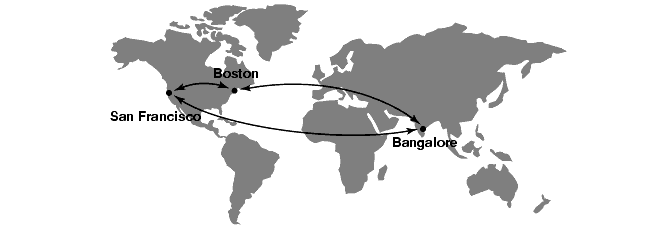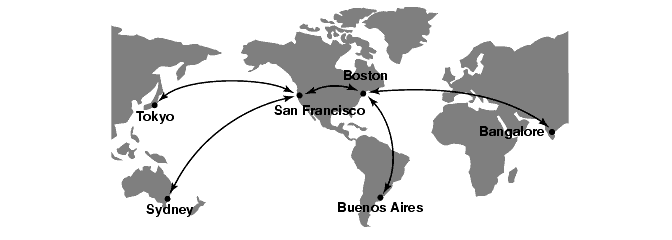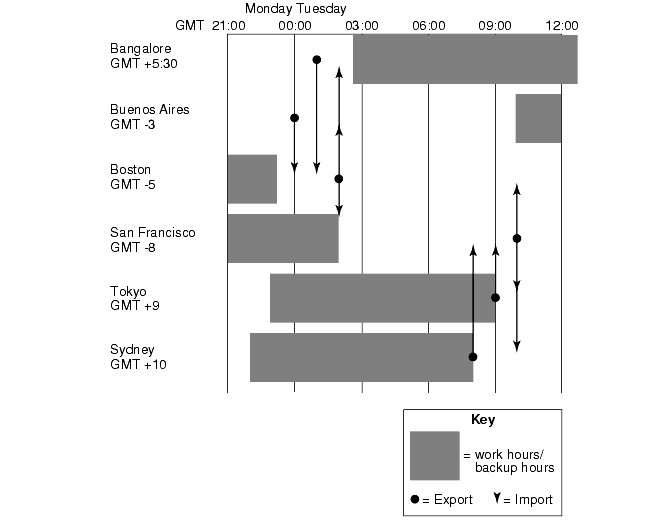


|
Figure 19 shows a simple case, involving one point-to-point update. All updates need not be point to point, however, because they are cumulative. Suppose that the following updates take place among three replicas:
Update 1: Replica 1 sends changes to Replica 2
Update 2: Replica 2 sends changes to Replica 3
There is no need for Replica 1 to update Replica 3 directly, because the changes from Update 1 are included in Update 2. This feature gives administrators flexibility in devising update strategies and patterns. For efficiency, a single update can be targeted at multiple sites, for example, all other replicas in the VOB family.
In general, you can implement any update topology, as dictated by organizational structures, communications/transportation costs, and so on. Figure 20 shows a simple peer-to-peer synchronization update pattern and Figure 21 shows a double-hub hierarchical pattern. See Chapter 2, Planning a MultiSite Implementation, for more information.
Figure 20 Peer-to-Peer Synchronization Pattern

Figure 21 Hierarchical Synchronization Pattern

Site administrators must design a strategy for sending updates among the various replicas. They must specify an update pattern for the VOB family and an update frequency for each replica. MultiSite Use Model gives planning guidelines.
For example, the administrators for the VOB family in Figure 21 make the following decisions:
The hub replicas, which undergo rapid development, synchronize every hour.
Each hub replica synchronizes daily with its spoke replicas. Each spoke replica will send an update packet to the hub replica, and then the hub replica will send update packets back to the spoke replicas. Because these packets may be large and take a long time to import, the synchronization must not take place during working hours or during VOB backups.
NOTE: Synchronization cannot overlap with VOB backup because VOBs must be locked while they are being backed up, and the syncreplica command fails if the VOB is locked.
All sites use receipt handlers to import packets as soon as they are received.
Figure 22 shows the synchronization timeline for the hub-spoke updates (but not the hub-to-hub updates). This timeline accounts for time zone differences and includes extra time to make sure that each synchronization phase completes before another begins.
Figure 22 A Synchronization Export Schedule

|
Feedback on the documentation in this site? We welcome any comments!
Copyright © 2001 by Rational Software Corporation. All rights reserved. |